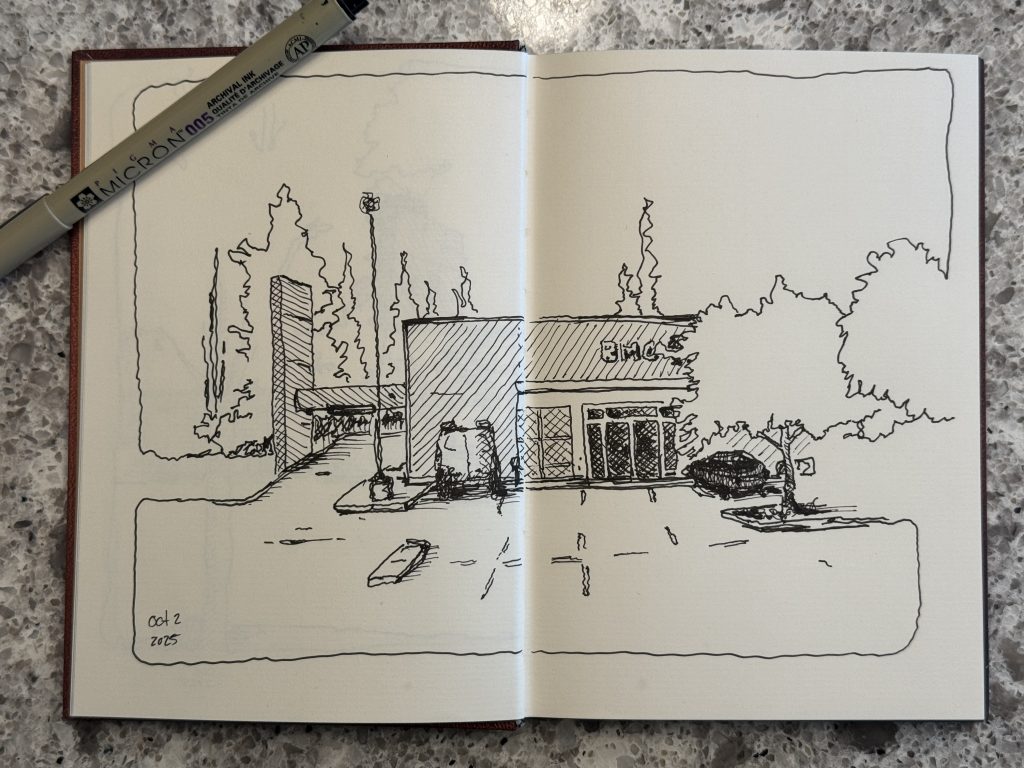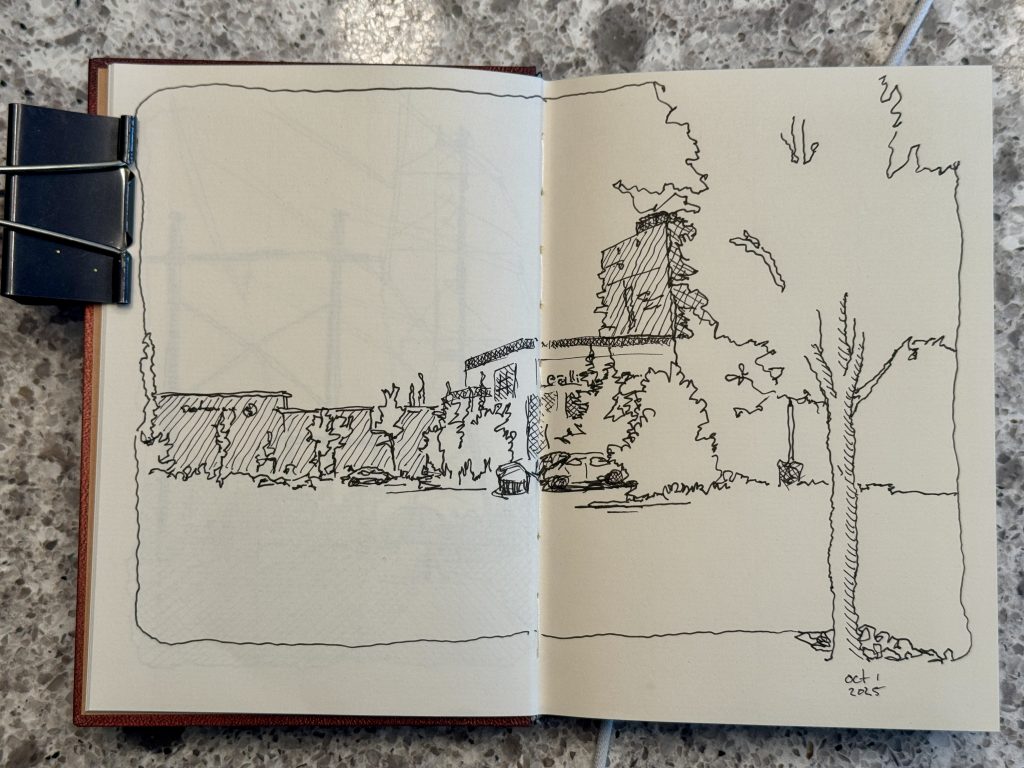Crossposted on Notes for a Sketch
It’s hardly worth logging a few messy sketches but I will say since declaring that I was going to start a daily art challenge and do a sketch every day… well, I have.
The afternoon after my last post I made my way to the art store. There are a couple good ones in the city, but I’ve been supporting the place near Whyte Ave called The Paint Spot. It is a pretty typical art store, crammed floor to ceiling with more art supplies, books and toys than one could ever hope to try in a lifetime.
I went right back to the corner and bought a couple big sheets of cold pressed watercolour paper. This is the paper we used in the art classes I took and my winter goals include trying to do some regular painting in the shelter of my basement when the temperatures drop. I can break down one of those big sheets into about twenty to thirty smaller canvases, so with a bank of nearly fifty to keep me busy over the winter I should be able to start honing some winter watercolour scenes come December.
I also made the mistake of walking past the sketchbook aisle.
Let me be clear. I do not need any more sketch books.
I have a medium-sized shelf filled with sketchbooks that are not even close to half-used up. But I do see a new book and get it in my head that, hey, I could use this sketchbook for just that project. You know, like for example, I walked past the sketchbook aisle and I thought to myself: self, what if I bought a book with the intention of using it for practice art? Like, what if I started the book knowing I was going to fill it with half-baked ideas and doodles and experimental stuff?


That’s the other problem. I stopped buying cheap books. I’ve become one of those artists who buys ahem-quality-cough-cough supplies. That’s great and all, but bougie as that is I then draw myself into a corner of feeling like the art inside those pages needs to match the quality of the canvas. As in, I’ll buy a nice leather-bound sketchbook then feel this overwhelming sense that every picture needs to be good enough to be drawn in a leather-bound sketchbook. It is a bit stifling, to be honest.
suburban sketching
there are no strict rules for what makes and urban sketch, I suppose. one could reflect upon the philosophical nature of an art form that was perhaps conceived as a kind of tourist snapshot art form, visiting a place of architectural urban beauty, a place built by people, and turning it into a sketched scene upon a piece of paper or in a notebook as kind of plein air reference art form. if one lives in a place of cultural significance or often visits those places then urban sketching is a revelatory form of personal expression, finding an excuse to sit for a while and take in a scene, soak it in with ones eyes and translate it to scribbles on a page. my reintroduction to the sport was inspired, actually, by a visit to dublin where I sought out an art supply store so that I could compensate for my lack of planning and find something to urban sketch the city. but if one lives, say, in the suburban outskirts of a small-ish and insignificant city on the canadian prairies where nothing much of architectural consequence exists then one is thereafter reduced to sketching little more than cookie cutter houses and chain restaurants and neatly planned community sprawl. to differentiate that as suburban sketching seems fair.So, yeah, art store got a few of my bucks and I bought a nice “practice” sketchbook that I have deemed will be messy and disordered and full of whatever drawings in whatever form I choose.
I have drawn in that book four times.
And I have drawn in one of my bougie books thrice, contributing there to my daily challenge requirements of a sketchy urban sketch.
Oh, and you thought art was relaxing, huh?











You must be logged in to post a comment.